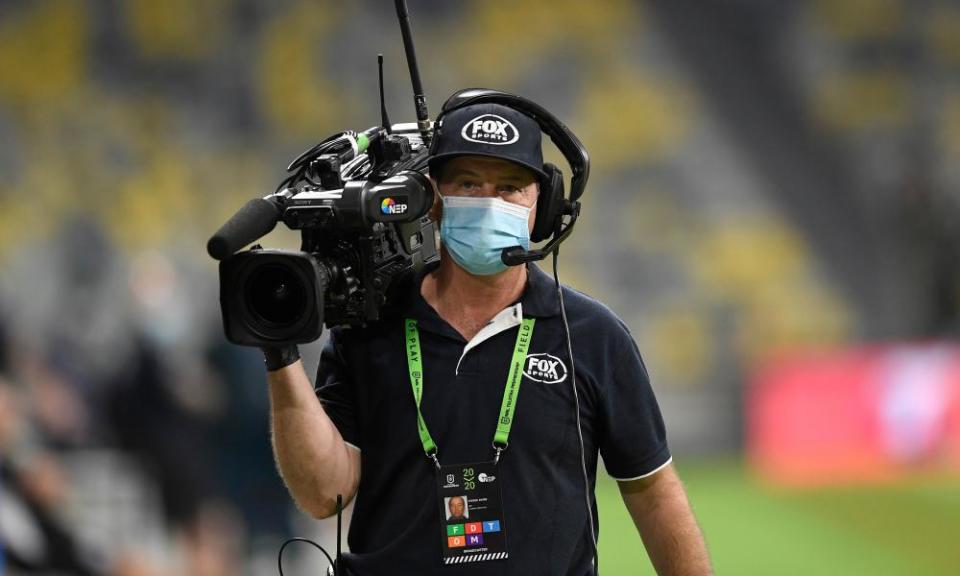D-Day arrives with broadcast deal to shape future of Australian rugby

Friday looms as D-day for Australian rugby and its new broadcast agreement, which will determine the future of the game in this country for the next five years. Rugby Australia set 4 September as the deadline for broadcasters to submit their bids as it attempts to leverage a deal – or deals – that will maintain rugby’s status as a major sport.
When rugby went professional in 1995 it was a seller’s market. Rupert Murdoch’s News Corporation beat the breakaway World Rugby Corporation, backed by Kerry Packer, for the right to televise Australian, New Zealand and South African rugby in a deal worth US$555,000 over 10 years.
Twenty five years later Australian rugby finds itself in a buyer’s market. Rugby’s long-term broadcast partner, Fox Sports, has downgraded the value of the code and it remains to be seen whether any rival bidders, such as Optus, emerge.
Former Rugby Australia chief-executive Raelene Castle put together a “whole of game” broadcasting package, which included everything from club rugby to the Wallabies. In an unprecedented move, Castle took the broadcast rights to the open market, antagonising Fox Sports, but pressuring the pay TV network to double its initial low offer of only $20m a year, which she rejected to pursue a potentially bigger deal from Optus.
But Castle was unable to conclude a deal before the coronavirus pandemic hit and she resigned in April. The new Rugby Australia leadership of chairman Hamish McLennan and interim CEO Rob Clarke has adopted a different strategy, which allows broadcasters to buy the whole package or carve up individual products, derided by some commentators as a “showbag” approach.
Castle’s strategy required just two bidders to potentially be successful, while the McLennan/Clarke plan may need multiple bidders to create competitive tension. Are there enough bidders out there to push up the value?
The “showbag” includes an assortment of goodies: Sydney and Brisbane club rugby; a State of Origin type game between NSW and Queensland; and an international Super Eight competition involving the top two teams from Australia, New Zealand and South Africa as well as teams from Japan and South America.
There may well be bids for all of the goodies, but that does not necessarily mean the price will be right for rugby to fund itself. Sydney and Brisbane club rugby, separately at least, do not rate highly enough on television to add real commercial value to a broadcast agreement.
The State of Origin idea has been around for years. The concept works wonderfully in rugby league because players are selected from NRL clubs, not rival state teams. If players were selected from a national club competition rather than rival Super Rugby teams the proposed State of the Union clash would have enormous potential. But it is understood RA has dismissed the idea of a two division national club competition, which could potentially replace Super Rugby and reduce costs.
Super Rugby is the most difficult product RA is trying to sell to broadcasters because no one knows for sure what is for sale. RA has included two proposed formats – a 10-team trans-Tasman competition involving five sides from Australia and New Zealand and a five-team Australian domestic competition, a continuation of the current Super Rugby AU.
Significantly, RA did not include the eight to 10 team trans-Tasman competition initially proposed by New Zealand, which only included two or three Australian teams. Given the enormous popularity of the Super Rugby Aotearoa competition this year, you would think RA would have at least tested the broadcasters’ appetite for this format to compare its value to its preferred option.
The Super Eight competition is an interesting concept, but seems like a modified version of the flawed Super 18 format. If southern hemisphere rugby has learnt anything, it is that over-reaching geographically is fraught with danger.
Related: Wallabies on sabbatical hammer another nail in Super Rugby's coffin | Bret Harris
Whatever potpourri of products RA manages to sell to broadcasters the rivers of gold that sustained the game have dried up. Broadcasters are facing their own financial challenges and focusing on sports that deliver big ratings and subscriptions. Australian rugby used to be one of those sports and it needs highly competitive teams playing attractive rugby to become one again.
The fact that Rugby Australia is moving to cut another $15m in operational costs indicates administrators are not optimistic broadcasters will pay a premium price for their products, especially not the $57m a year it had been receiving.
If Rugby Australia is unable to secure a lucrative broadcast agreement, one that will help to keep Australia’s best players in Australia, it will have huge ramifications for the future of the game.
On Friday we will start to find out how many bidders are serious about Australian rugby and what they are prepared to pay. As it did 25 years ago broadcast dollars are sure to play a big part in determining the size and shape of Australian rugby, but the new deal is likely to be more about surviving than thriving.

 Yahoo Sport
Yahoo Sport 





































